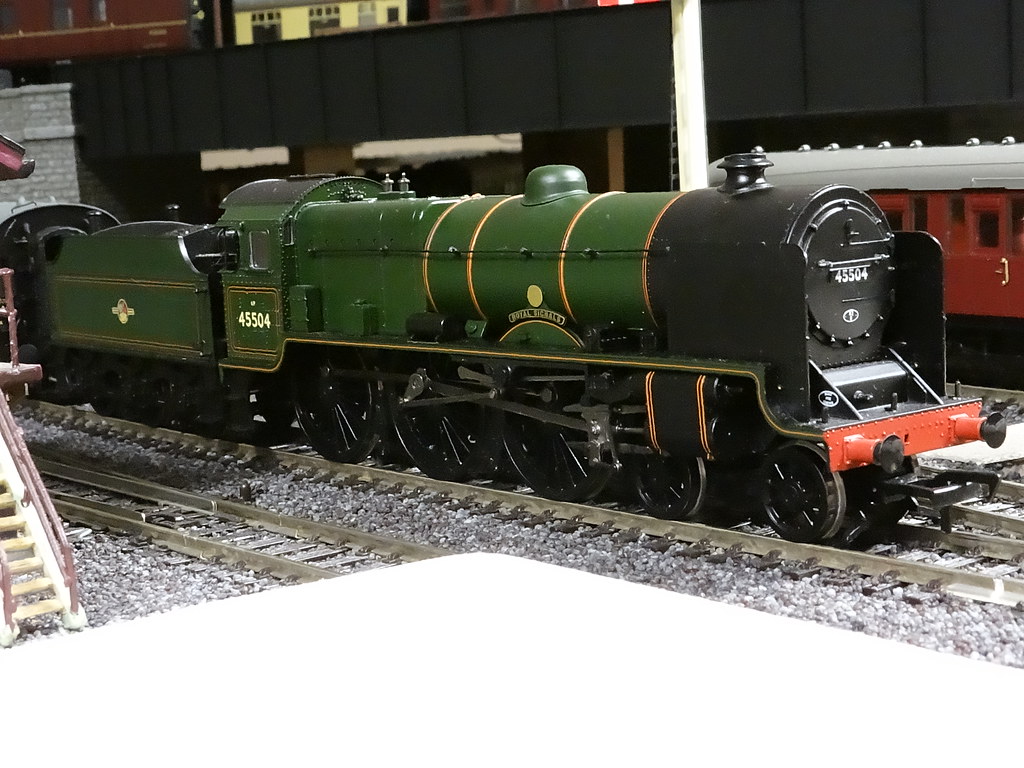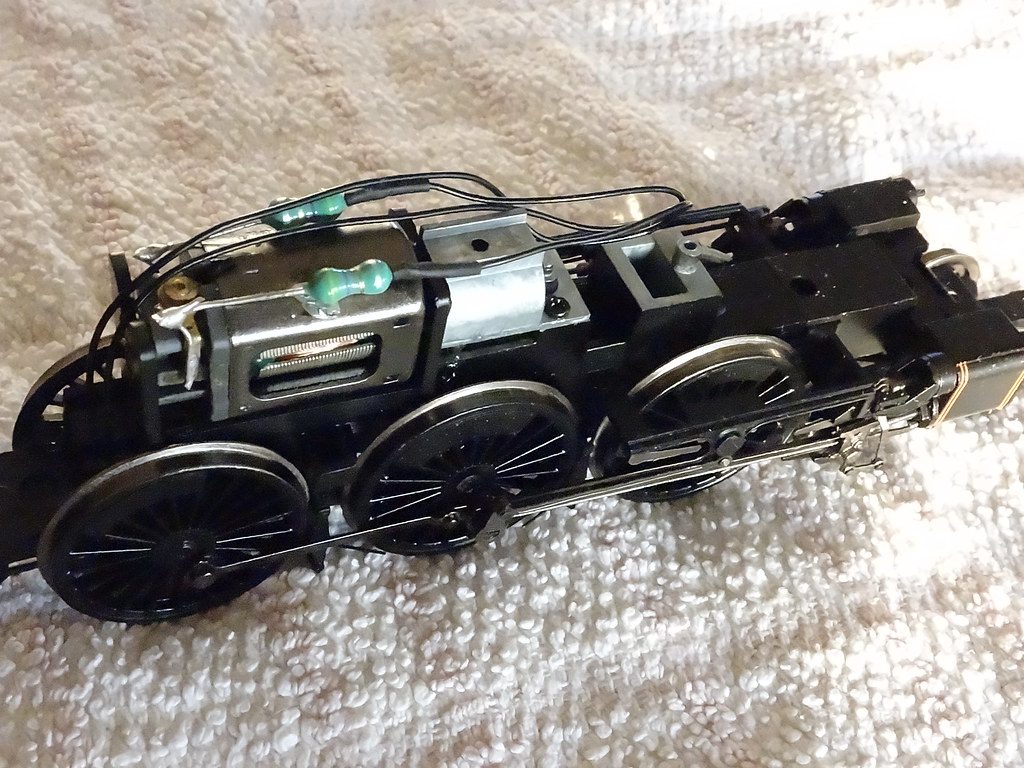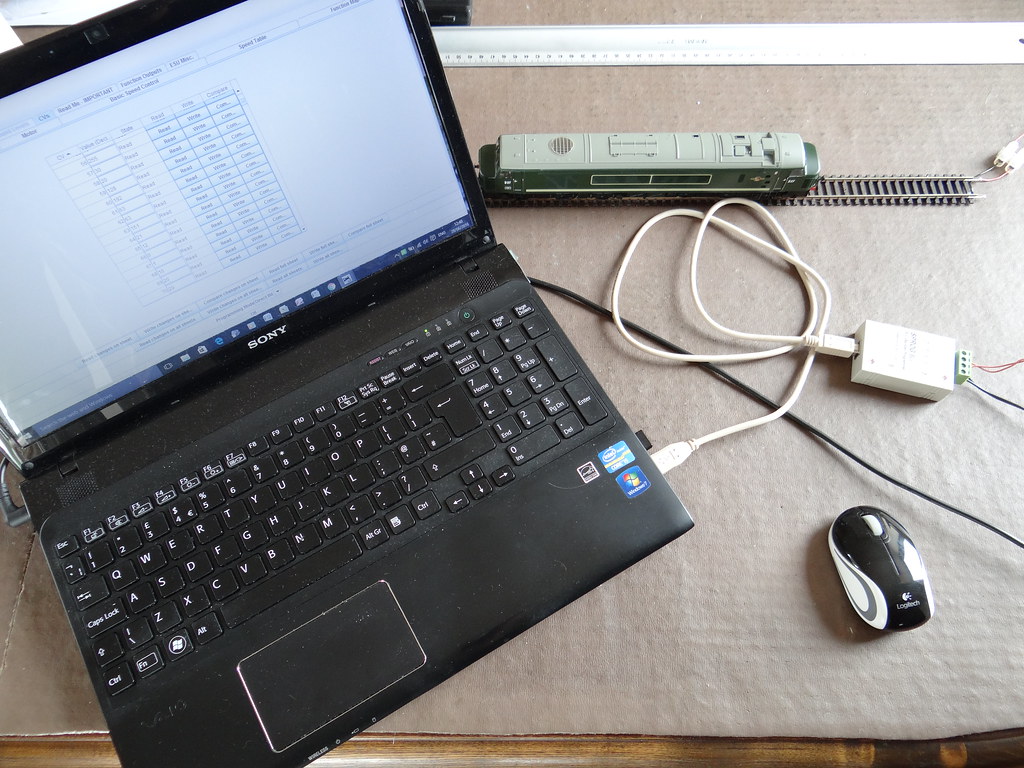No.137 Well Chuffed – Bachmann 45504 Royal Signals DS locomotive running on analogue DC
As the year end approaches a new Blog Post is well overdue.
After a brief foray into the world of digital sound on
analogue DC with two or three Bachmann Diesels (fitted with LokSound chips) I
thought it time to investigate the possibilities of digital steam sound. I like
the look and feel of Bachmann’s unrebuilt Patriots and I had been watching
Giggleswick with a mind to making a purchase when I deemed the price to be
right. However I was also keeping an eye on the Junction Box, run by Ian Hunter
in Haltwhistle. Bachmann’s Giggleswick has an Early Emblem which is not ideal
for the 1960s. How much better to buy Bachmann’s 45504 Royal Signals complete
with LokSound chip and with Late Crest. Thank you Ian in Haltwhistle.
Straight out of the box I was not impressed. On my layout
the engine struggled with five coaches on and the sounds were disjointed and
spasmodic. The first task was to add some extra lead as detailed previously in one of my earlier Posts.
It is worth noting that for the latest digital sound
locomotives that Bachmann have moved the digital chip from the engine to the
tender.
Locomotive chassis - Bachmann 45504 Royal Signals digital
sound locomotive
Having removed the DC chip I guess this creates an
opportunity for adding even more lead. However when lining the inside of the
firebox as carried out for the earlier models I now needed to form a couple of
cavities in the lead over the top of the motor to accommodate the two
capacitors which had previously been soldered to the rear of the motor.
Having added the extra lead I would have another play at
making sound. The extra weight increased the haulage capacity and reduced wheel
slip. Suddenly the engine became far more controllable and after a little bit
of practice at driving I was soon well impressed (chuffed) with the noises.
As when running the Bachmann diesels on analogue, starting
off requires a high degree of sensitivity to the position of the control knob
which I think I understand. However I need more practice when stopping. I guess
it is another of those situations where it becomes almost impossible for the
model behaviour to follow prototype. It takes many minutes for the prototype to
gather speed. It takes even more minutes to reduce power and to glide to halt.
For the model, the starting, the running and the stopping all have to be
compressed into fractions of a minute – no wonder the model sounds can struggle
to match the movements.
Back to running digital sound on analogue DC. What do you
get and what is missing? Running on analogue provides access to the main
running sounds which ‘play’ in sequence according to motor current and speed as
programmed by the chip designer. Separate to these movement related sounds the
digital sound chips come loaded with sound packets associated with activities
(literally the bells and whistles). On LokSound chips these extra sounds can
only be accessed digitally using the ‘Function Keys’. If you don’t have a
Digital Controller then the SPROG can be the next best answer. In a previousPost I pictured my SPROG and programming track connected to my laptop.
For information I have made a short video with Royal Signals
on the programming track with the laptop being used to access the Function Keys
and then to drive the locomotive.
From Bachmann the Function Keys are assigned as follows
(watch the cursor on the video).
Bachmann Patriot
F1 Sound On/Off
F2 Whistle 1
F3 Whistle 2
F4 Whistle 3
F5 Coal shovel
F6 Blowdown
F7 Injector
F8 Cylinder Draincocks
F9 Coupling clank
F10 Guard whistle
F11 Handbrake
F12 Inertia CV 3/4 on/off
F13 Shunting speed on/off
If you have a small layout I can see that playing with all
these sounds would be very absorbing. If however you have a larger layout and
enjoy watching trains go by, then perhaps a lot of these sounds are
superfluous. This being the case I would question whether it is necessity to
use digital control with all its added costs and complications?




Comments